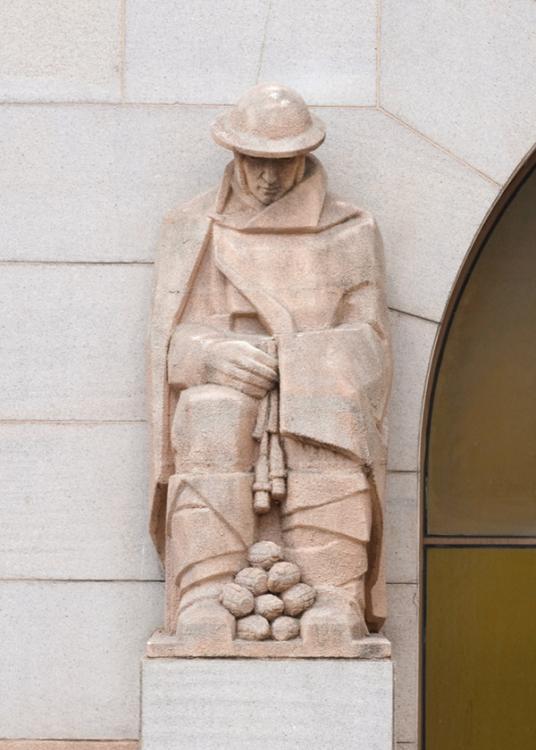The bomber is an infantryman on the Western Front in the winter of 1917
The bomber’s weapon is the grenade or ‘bomb’. In battle, the bomber’s task is to throw hand grenades or fire rifle grenades at the enemy. To protect himself against the cold and rain, he is wrapped in a waterproof groundsheet. In his hands he is holding a couple of rifle grenades on rods. These rods slide down the barrel of his rifle and enable him to fire a grenade much further than it could be thrown. At his feet is a pile of Mills bombs, the most effective British hand grenade of the Great War. As the war on the Western Front dragged on, the infantry learned to work as teams of bombers, riflemen with bayonets, and light machine-gunners using their different weapons in combination to destroy the enemy.
Explore bomber 3D model
